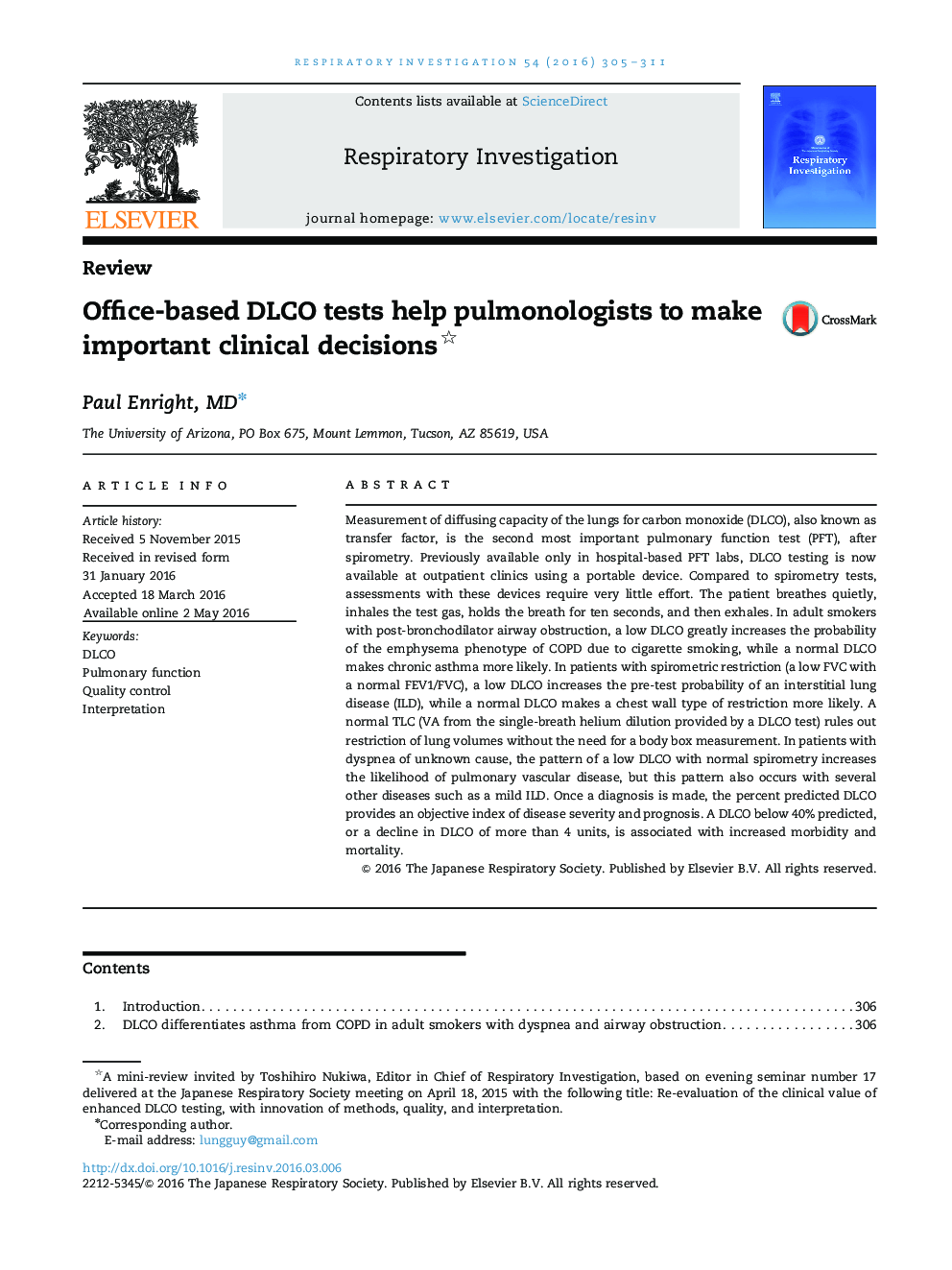| Article ID | Journal | Published Year | Pages | File Type |
|---|---|---|---|---|
| 3418533 | Respiratory Investigation | 2016 | 7 Pages |
Measurement of diffusing capacity of the lungs for carbon monoxide (DLCO), also known as transfer factor, is the second most important pulmonary function test (PFT), after spirometry. Previously available only in hospital-based PFT labs, DLCO testing is now available at outpatient clinics using a portable device. Compared to spirometry tests, assessments with these devices require very little effort. The patient breathes quietly, inhales the test gas, holds the breath for ten seconds, and then exhales. In adult smokers with post-bronchodilator airway obstruction, a low DLCO greatly increases the probability of the emphysema phenotype of COPD due to cigarette smoking, while a normal DLCO makes chronic asthma more likely. In patients with spirometric restriction (a low FVC with a normal FEV1/FVC), a low DLCO increases the pre-test probability of an interstitial lung disease (ILD), while a normal DLCO makes a chest wall type of restriction more likely. A normal TLC (VA from the single-breath helium dilution provided by a DLCO test) rules out restriction of lung volumes without the need for a body box measurement. In patients with dyspnea of unknown cause, the pattern of a low DLCO with normal spirometry increases the likelihood of pulmonary vascular disease, but this pattern also occurs with several other diseases such as a mild ILD. Once a diagnosis is made, the percent predicted DLCO provides an objective index of disease severity and prognosis. A DLCO below 40% predicted, or a decline in DLCO of more than 4 units, is associated with increased morbidity and mortality.
